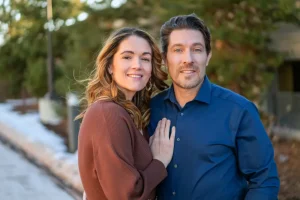To gain greater insight, Lawyer Monthly has spoken with medicolegal expert Dr François Sestier, an expert on life expectancy calculation. In this feature, he discusses whether there is any precise methodology when it comes to calculating the life expectancy of an individual.
First, why might a lawyer request an opinion on the life expectancy of an individual?
A lawyer may request the calculation of a life expectancy of an individual for several possible reasons. The need for such an opinion arises mostly in medical liability lawsuits. Defence lawyers may seek an opinion suggesting a reduced survival period, reducing the amount of damages awarded, while plaintiff lawyers may look for an expert known to give opinions slanting towards long life expectancies, allowing the requested damages to be maximised. This opens the field to the quest of a biased opinion. The life expectancy expert themselves should have enough ethics to deliver an unbiased opinion.
Is there any methodology that can deliver an unbiased and science-supported opinion for the calculation of an individual’s life expectancy?
The easiest method is to use the constant relative risk (RR) method. This method relies on the assumption that the relative risk of dying with a medical condition stays constant with increasing age. This method overestimates the risk of dying with most chronic medical conditions, leading to calculated mortality rates that are generally too high at older ages, reducing the true life expectancy associated with a medical condition. Although this method is valid for some medical conditions such as spinal cord injury under the age of 50 years, the constant RR method decreases the estimates of life expectancy for most chronic medical conditions.
This biased method is nevertheless commonly used in the life insurance industry, as building a life insurance rating on a biased shorter survival will favour the life insurance company. As most life expectancy experts are (or have been) life insurance underwriters, this biased method is commonly used, although it should definitely be banned from the litigation field.
This method overestimates the risk of dying with most chronic medical conditions, leading to calculated mortality rates that are generally too high at older ages, reducing the true life expectancy associated with a medical condition.
In that case, what is the best method to calculate a life expectancy to be used by the Court?
For most chronic medical conditions, such as diabetes or coronary artery disease, the risk of an early death is not constant, but decreases with older ages. Thus, a patient under the age of 40 years having a heart attack will have a high predicted mortality in the years immediately following his heart attack; but if this patient has already survived up to the age of 70 years, the excess risk of dying will be far lesser.
For most chronic medical conditions, there are two methods that will give unbiased life expectancies closer to the true life expectancies associated with such a chronic medical condition. These are the log-linear declining relative risk (LDR) method and the proportional life expectancy (PLE) method (my preferred method). Although these two methods should be used routinely by experts, this is rare to see.
Can you calculate the life expectancy of an individual having several medical conditions reducing their likelihood of survival?
The first challenge is to select all the medical conditions reducing life expectancy in the medical brief. Lengthy experience in the field of life underwriting is an advantage when it comes to identifying all of the medical conditions associated with a reduced survival.
But here, again, most experts – being past medical officers of life insurance companies – add the biased relative risks associated with these medical conditions (given by the underwriting manual of the life insurance company), assuming that these relative risks will remain constant with aging. Then they transform this final biased relative risk into a life expectancy using an actuarial table available to all of these life insurance companies. Again, this biased method should be banned in the litigation field.
The only method to be used in the litigation filed to calculate a true life expectancy associated with several medical conditions has been proposed by Dr. Singer, and is recommended by the American Academy of Insurance Medicine. To employ this method, the expert must proceed in the following four steps sequentially:
- Select the most recent publication reporting the long-term survival for each of the medical conditions reducing the life expectancy.
- Calculate from each of these publications the excess mortality (measured by the excess death rate or EDR) associated with each of these medical conditions.
- Add the EDRs for each medical condition to the expected mortality rate at the patient’s age.
- Use these obtained new mortality rates to build a new life table to calculate the life expectancy of an individual of the same age who has these medical conditions.
This method, which is evidenced-based and unbiased, is rarely used by experts, who are not familiar with these actuarial concepts.
Lengthy experience in the field of life underwriting is an advantage when it comes to identifying all of the medical conditions associated with a reduced survival.
What other biases have you observed regarding these calculations?
Some experts do not consider all the medical conditions altering survival.
Some experts add considerations like fortune, family support or absence of common medical conditions to alter the true life expectancy associated with medical conditions reducing survival.
Some experts cite old references, often 20 or more years old, but do not use them and rather give an estimated life expectancy based only on their clinical experience. This is obviously an unreliable method when numerous medical conditions reduce survival. Their opinion is then no more than an educated guess (‘junk science’) and not a scientific, unbiased opinion to provide to the Court.
Finally, what would be your recommendation to a lawyer who has to find an expert to calculate a person’s life expectancy?
My main recommendation would be to only use experts who are adept in employing solid actuarial methodology based on the best recent publications, and who are able to provide to the Court a true estimate of the life expectancy of a person with several medical conditions reducing survival. Such opinions will prevail in Court.
////////////////////
Dr François Sestier, Medicolegal Expert
Suite 901, 1851 Sherbrooke East, Montreal, QC, H2K 4L5, Canada
Tel: +1 514-738-6476
Fax: +1 514-738-2333
www.drsestier.org (English) | www.drsestier.net (French) | www.lifeexpectancyexpertise.ca
////////////////////
Dr François Sestier is a leading cardiologist, a clinical professor of medicine, an expert in life expectancy calculation and a past president of the Canadian Life and Health Medical Officer Association. In terms of life expectancy calculation expertise, Dr Sestier has over 15 years’ worth of experience, during which he has reviewed more than 8,000 scientific publications reviewing mortality for more than 400 medical conditions. In 2020, he published ‘Expertise 101’, the first and only textbook on how to give an expert opinion in the province of Quebec.





















